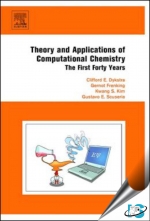Tab Article
Computational chemistry is a means of applying theoretical ideas using computers and a set of techniques for investigating chemical problems within which common questions vary from molecular geometry to the physical properties of substances. Theory and Applications of Computational Chemistry: The First Forty Years is a collection of articles on the emergence of computational chemistry. It shows the enormous breadth of theoretical and computational chemistry today and establishes how theory and computation have become increasingly linked as methodologies and technologies have advanced. Written by the pioneers in the field, the book presents historical perspectives and insights into the subject, and addresses new and current methods, as well as problems and applications in theoretical and computational chemistry. Easy to read and packed with personal insights, technical and classical information, this book provides the perfect introduction for graduate students beginning research in this area. It also provides very readable and useful reviews for theoretical chemists.


